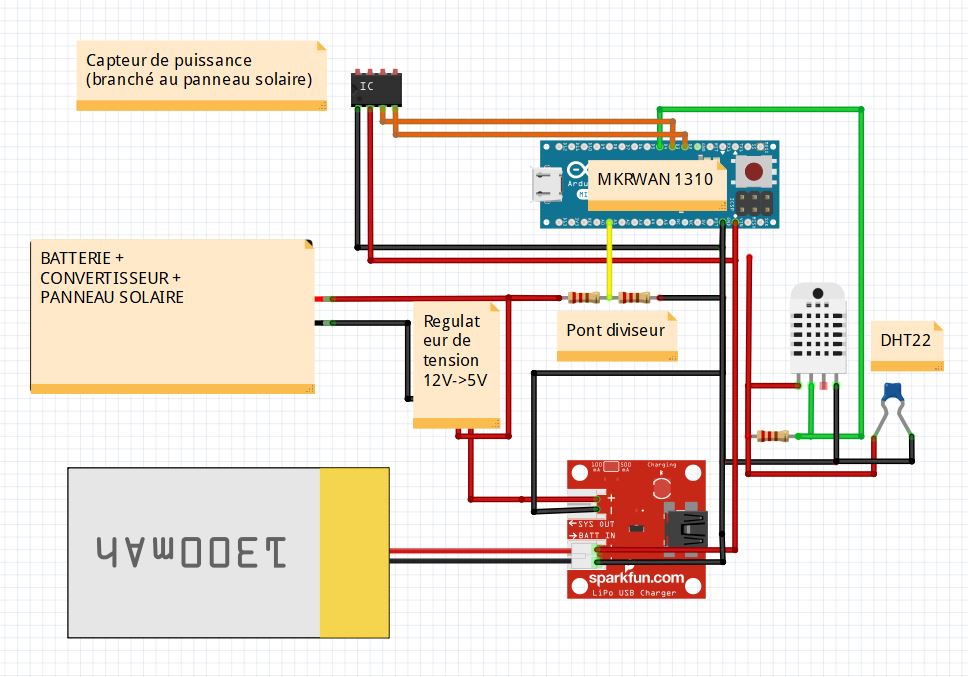IoT is a rapidly expanding field. As the majority of appliances are subject to autonomy constraints, energy-efficient means of communication should be adopted. This involves the use of alternative communication networks, one of the most widespread being the LoRa network. Its popularity comes in particular from its low cost as well as its low consumption due to its relatively low throughput and relatively short range. Therefore, antennas should be installed to ensure reliable coverage of an area. Installed outdoors and subject to special conditions, its condition should be constantly monitored. Our project therefore aims to deploy an autonomous LoRa gateway in energy as well as the implementation of its monitoring through a Web interface.
Energy autonomySteca solar controller converts the voltage of the solar panel from 17v to 12v to charge the battery and then deliver energy to our system. The panel provides enough energy for our system to be self-contained.
SensorsWe used a 12v -> 5v converter to charge our 3.7v battery that will power the Arduino board. Even if our 12V battery is no longer charged, we have the 3.7V battery that will be our backup battery for the Arduino board.
With the divider bridge at the bort of the 12V battery we have an idea about the level of charge.
The sensors are connected to our Arduino. The power meter allows us to have the power value delivered by our solar panel to our 12V battery. The DHT22 sensor allows us to have the temperature and the humidity values.
Sending DataWe send the data with The Things Network. We created a webhook on TTN in connection with Ubidots. Then we recover the data from Ubidots after decoding to draw the curves so that the user could follow the status of the LoRa antenna. This data is sent every 5 minutes.
PerspectiveWe wanted to use Sigfox so that if the LoRa antenna no longer works, we can send our messages by Sigfox. But unfortunately, we do not have the Sigfox subscription. However, a place was granted to add a Sigfox antenna on the PCB.








_4YUDWziWQ8.png?auto=compress%2Cformat&w=48&h=48&fit=fill&bg=ffffff)






_Ujn5WoVOOu.png?auto=compress%2Cformat&w=40&h=40&fit=fillmax&bg=fff&dpr=2)

Comments
Please log in or sign up to comment.